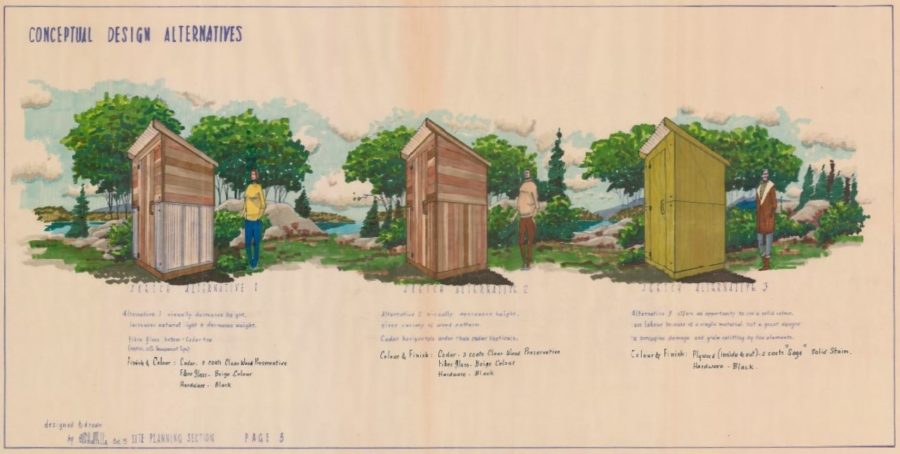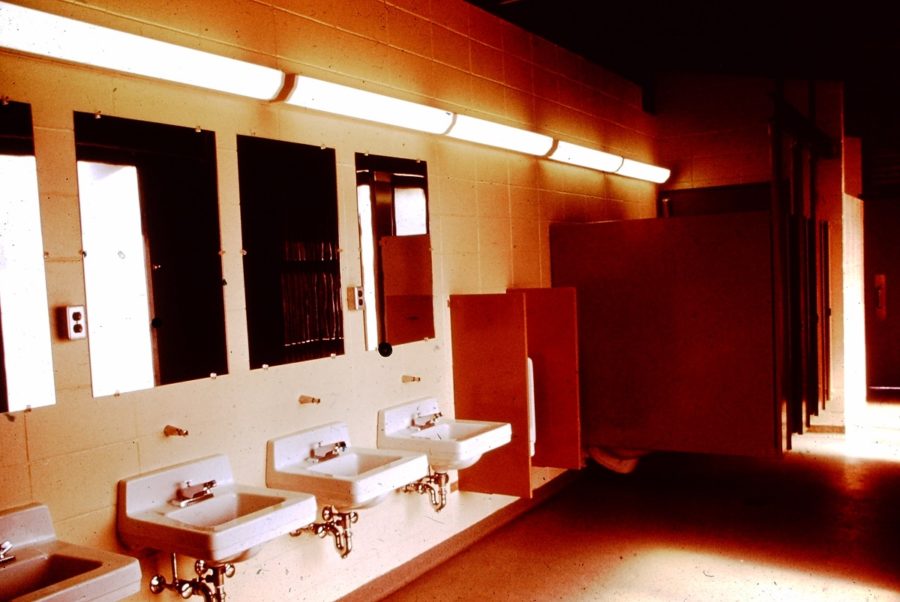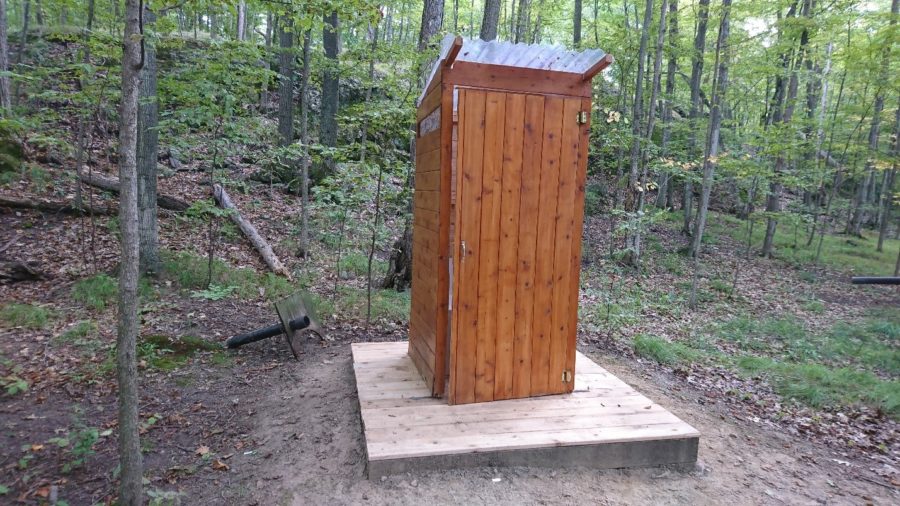
We called on Ontario Parks Architect Matthew Harvey to provide some insight on outhouses…the good, the bad, and the stinky!
In the course of my 30-year architectural career with Ontario Parks, I occasionally get asked what I do for a living. I proudly reply “Why, I design outhouses!”
If that person doesn’t excuse themselves, turn on their heel and beat a hasty retreat, then we might get down to a discussion that goes something like this:
~
Why do outhouses smell?
The answer is not as obvious as it seems.
Vault privies, as we call them, are large concrete holding tanks that are pumped out as needed. While the contents remain in the tank, the tank must be ventilated. A properly ventilated tank can be relatively innocuous.

But it’s not always so easy.

Large vents outside of the tank that extend above the roof line are necessary. They’re often dark in colour to promote them warming up and creating what’s called a “stack effect,” which pulls air down the toilet drop tube (the thing you sit on), up the vent and beyond, where it can’t be detected.
If you site a privy under trees or down near a large body of water, where the air can become stratified due to cooling effect of the lake, then the smell will be held in place and not escape. Hence the dreaded vault privy smell.
Site location is crucial to a successful privy!
~
What are the two bars at the bottom of the drop tube for?
They’re kid catchers. And I have it on good authority that kids have fallen all the way in without them.
~
It’s not all outhouses, is it?
Indeed, provincial parks have a plethora of facilities for our campers. We have backcountry “thunder boxes” (where you can experience the sublime pleasure of doing what bears do in the woods).
 Comfort station, 2015, Charleston Lake Provincial Park
Comfort station, 2015, Charleston Lake Provincial Park
On the other end of the spectrum, we have large sophisticated “comfort stations,” in the parlance, that accommodate all your needs from showers, washrooms, and laundry facilities; all non-gendered and accessible.

~
What’s with the stone and rustic wood design?
This is an interesting bit of history.
Park design, as we know it, was pioneered during the Great Depression of the 1930s, when America – under President Franklin D. Roosevelt – instituted the Civilian Conservation Corp as part of the New Deal.

Young people who were unemployed were given training to build the parks infrastructure that exists today in the United States. The design of the buildings was done by architects working for the National Park Service.

Because Franklin D. Roosevelt had spent his summers as a lad in the Adirondacks, US Park-style mimicked classic Adirondack cottages with their stone foundations and log walls. When parks were established in Canada, they looked to the south and decided to go with the same look.
~
What do you like best about working on outhouses?

Designing outhouses is like playing jazz standards. You have a basic structure and you follow it, but it’s also always changing to adjust to the conditions.
Looking at older designs, you see great variety in the “stone and wood” finishing. Sometimes it’s granite flagstones, sometimes it’s coursed limestone ashlar. Sometimes it’s a log look, and sometimes it’s board and batten.
We are constantly evolving and making improvements in the designs to make them more accommodating and easier to maintain.
And the needs are never static. We are always improving for accessibility.
~
Do you have some favorite outhouses?
Oh yes. I like the Dr. Who “TARDIS” earth pit privies in Frontenac Provincial Park (which were recently replaced with our classic wood earth pit privy design).

I also love the “Centennial” vault privies built with their stone fronts.

I admire the use of hockey pucks for spacers between the bottom of the wood vault privy walls and the top of the concrete holding tank slab. Perfect creative use of a cheap and readily available material. So Canadian in its inertness, durability and unobtrusiveness.
~
Have there been outhouse fails?
Sadly, there are occasional outhouse fails. We recall the unannounced substitution of a concrete vault with a plastic vault that wound up floating like a boat above the ground because the plastic wasn’t heavy enough to counteract the buoyancy of the empty tank.

There have also been unauthorized privies built with no design and no ventilation, creating eye-peeling results from the smell inside!
~
Unfortunate DIY privies
Occasionally, we come across DIY privies (that can be very creative).

Please, please don’t attempt to construct your own toilets in our provincial parks. Proper human and pet waste management in our provincial parks is critical for the health, safety, and enjoyment of visitors and our ecosystems.
~
Outhouses…whither the future?
We have experimented for many years with composting toilets to replace the use of vault privies with holding tanks below. The advantage of composting toilets is that, if properly built and maintained, they produce compost and generate less smell.

The hard part is finding effective and easily maintained compost toilet designs that don’t require a building site with an upper level for the toilet and a lower level to service the composting tank. We are on a constant lookout for new designs with the hope of possibly implementing them in the future.
~


